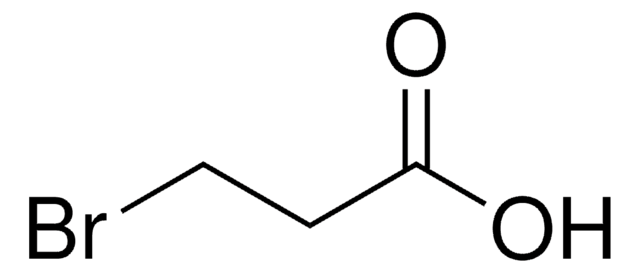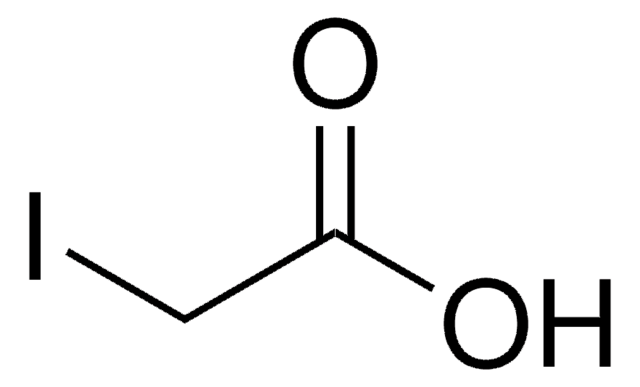17000
Bromoacetic acid
ReagentPlus®, ≥99.0%
Synonym(s):
α-Bromoacetic acid, Monobromoacetic acid
Select a Size
Select a Size
About This Item
Recommended Products
grade
reagent
Quality Level
product line
ReagentPlus®
Assay
≥99.0% (GC)
≥99.0%
form
solid
impurities
≤1% dibromoacetic acid (1H-NMR)
bp
208 °C (lit.)
mp
46-49 °C
47-49 °C (lit.)
solubility
chloroform: 10%, clear, colorless
functional group
bromo
carboxylic acid
SMILES string
NC(=O)C=C
OC(=O)CBr
InChI
1S/C2H3BrO2/c3-1-2(4)5/h1H2,(H,4,5)
InChI key
KDPAWGWELVVRCH-UHFFFAOYSA-N
Looking for similar products? Visit Product Comparison Guide
Related Categories
Application
Legal Information
related product
Signal Word
Danger
Hazard Statements
Precautionary Statements
Hazard Classifications
Acute Tox. 2 Oral - Acute Tox. 3 Dermal - Acute Tox. 3 Inhalation - Aquatic Acute 1 - Eye Dam. 1 - Skin Corr. 1A - Skin Sens. 1
Storage Class Code
6.1A - Combustible acute toxic Cat. 1 and 2 / very toxic hazardous materials
WGK
WGK 3
Flash Point(F)
235.4 °F - closed cup
Flash Point(C)
113 °C - closed cup
Personal Protective Equipment
Regulatory Listings
Regulatory Listings are mainly provided for chemical products. Only limited information can be provided here for non-chemical products. No entry means none of the components are listed. It is the user’s obligation to ensure the safe and legal use of the product.
ISHL Indicated Name
Substances Subject to be Indicated Names
ISHL Notified Names
Substances Subject to be Notified Names
JAN Code
17000-500G:
17000-25G:
17000-RSAMPLE:
17000-INTR:
17000-VAR:
17000-BULK:
17000-100G:
Choose from one of the most recent versions:
Already Own This Product?
Find documentation for the products that you have recently purchased in the Document Library.
Customers Also Viewed
Active Filters
Our team of scientists has experience in all areas of research including Life Science, Material Science, Chemical Synthesis, Chromatography, Analytical and many others.
Contact Technical Service










